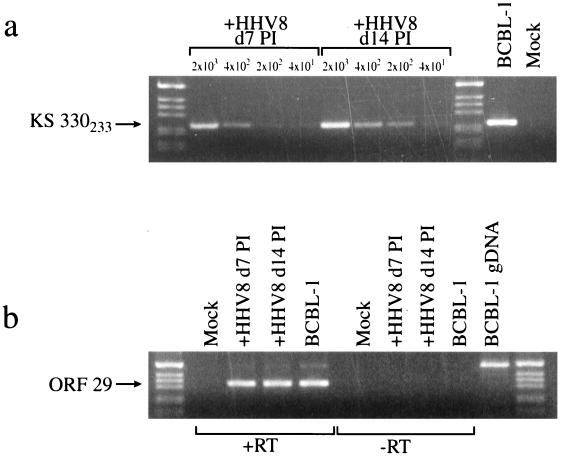FIG. 1.
DNA and RT-PCR analyses of HHV8-infected DMVEC. (a) DNA PCR amplification of the HHV8-specific KS330233 sequence from serial dilutions of HHV8-exposed DMVEC (+HHV8). DNA was amplified from 2 × 103, 4 × 102, and 2 × 102 and cell equivalents at 7 and 14 days PI (d7 PI and d14 PI, respectively). For positive and negative controls, PCR was performed on genomic DNA prepared from 2 × 103 BCBL-1 cells and mock-infected DMVEC. (b) RT-PCR detection of ORF 29 mRNA using cDNA from 2 × 103 HHV8-exposed DMVEC (+HHV8) at 7 and 14 days PI (d7 PI and d14 PI, respectively) to verify the authenticity of HHV8 infection. cDNA prepared from BCBL-1 cells was used as a positive control. No signal was obtained from mock-infected cells or samples prepared in the absence of RT (−RT). Cellular HPRT was simultaneously amplified from all +RT samples as a control for cDNA synthesis (data not shown). Amplification products from reverse-transcribed BCBL-1 cell cDNA and genomic DNA (BCBL-1 gDNA) demonstrate that the RT-PCR product from spliced mRNA is smaller than the product from genomic DNA. Products amplified from HHV8-infected DMVEC show only the smaller band, indicating lack of contamination from the viral inoculum or replicated virus.

